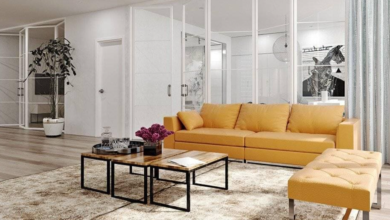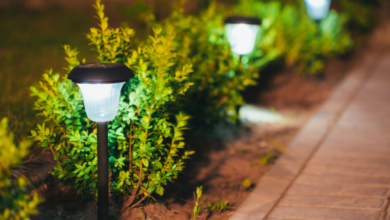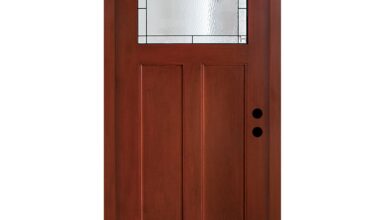How to Start a Minimalist Home Without Throwing Everything Out

Minimalism is often seen as all-or-nothing: get rid of most things, live with just a few, and completely change your life. But for many people, that just isn’t realistic. If you’ve ever looked around and wondered, “Where do I even begin?” you’re in the right place.
Our team at Made Minimal has helped many people make home decluttering feel easier and less pressured. It’s normal to feel stuck. Sentimental items, family opinions, and fear of waste can make it hard to start.
This article reveals gentle strategies that consider your emotions while creating lasting change. As a minimalist beginner, your first step isn’t clearing a closet but shifting your mindset. Let’s start with how you can do that.
Reset Your Mindset Before You Declutter
Before touching a single item, the most important space to declutter is your mind. If you’re new to minimalism, it helps to rethink what “minimalist enough” really means. It’s your mindset that sets the tone for everything that follows.
Try adopting these simple beliefs:
- Take your time: Sustainable minimalism doesn’t happen in a single weekend.
- Keep what’s meaningful: You decide what “less” looks like in your life.
- Define your own version: Your minimalist home doesn’t need to look like anyone else’s.
A gradual reset works better than doing it all at once. When you see declutter guilt as normal, it’s easier to keep going. Let’s look at some simple home edit ideas to help you get started.
Simple Home Edit Ideas to Start Your Minimalist Journey
Instead of trying to change your whole home at once, focus on a home edit by carefully looking at one small area. This takes away the pressure to be perfect and helps you build steady progress.
A home edit means carefully choosing what to keep. You’re asking, “What deserves to stay?” not “What can I get rid of?”
Start with manageable 15-30 minute micro-edits:
- Clear One Shelf: Empty one shelf completely. Give it a good clean, then thoughtfully place back only what you actually use regularly.
- Rethink One Drawer: What’s actually hiding in that junk drawer? Sort contents into daily use, occasional use, and “why is this here?” Return only the first category.
- Simplify One Spot: You can target a specific collection like your shoe rack or skincare products. Ask yourself, when did I last use this? Does it still work well?
Small wins help you avoid burnout and show that progress doesn’t need to be perfect. This gentle approach lowers declutter guilt because you’re making thoughtful choices. But there’s another type of clutter that can drain your mental energy.
See also: Top 7 Benefits of Regular HVAC Maintenance for Your Home or Business
Why Digital Clutter Matters and How to Fix It
Physical minimalism doesn’t help much if digital clutter is causing stress. A crowded inbox, unused apps, and too many browser tabs can feel just as overwhelming as a messy room.

Digital spaces can directly affect physical stress levels. Visual clutter increases cortisol production and makes decision-making harder.
Begin your gradual reset digitally:
- Tidy Your Inbox: Unsubscribe from emails you haven’t opened in three months. Create folders for subscriptions you want but don’t need in your main inbox.
- Clean Up Your Apps: When did you last use that fitness app from January? Move unused applications to a secondary folder or delete them entirely.
- Sort Your Files: Your digital files deserve the same attention as your physical spaces. Try grouping documents by month, project, or theme instead of letting them pile up randomly.
But as you start clearing your space, you might find that others in your home aren’t as excited about the change. Let’s see what small changes you can start with.
Gentle Ways to Encourage Minimalism at Home
Family resistance might feel frustrating, but it’s actually a perfect opportunity to practice patience and lead by example. As a minimalist beginner, working with your family’s reality rather than against it creates much better results:

- Start with your own spaces: like your closet, desk, or bedside. Don’t push anyone. Just show how calm and simple your space can be. Often when families see that, they’ll want to try it too.
- Emotional resistance doesn’t equal disinterest: It often comes from fear or guilt instead of really wanting to keep clutter. Try small before-and-after projects that show gentle success without any pressure.
Now that you’ve started building momentum (and maybe even inspired a few others), it’s worth remembering that minimalism is a steady, evolving practice.
Begin Your Decluttering Journey With One Small Win
Your minimalist journey starts with accepting your own pace and path. Pick one drawer, shelf, or digital folder to tidy today. Set a timer for 15 minutes and focus on making progress, not being perfect.
Remember that progress shows in feeling calmer, making quicker choices, and enjoying your space. Doing short, regular tidying sessions works better than long, occasional ones when you focus on what matters.
If you’re ready to add some beautiful, functional pieces to your newly organised spaces, we’d love to help. Learn how Made Minimal carefully chooses furniture and storage solutions that make minimalism feel both stylish and effortless.




